1. Upper Trapezius Stretch: Using your right hand, bring your head to your right shoulder until you feel a stretch on the left side of the neck. Relax your left shoulder down or hold the bottom of your chair for an increased stretch. Hold for 20-30 seconds, repeat 2-3 times and perform on the other side.
2. Levator Stretch: Using your right hand, pull your face down into your right armpit. Hold for 20-30 seconds, repeat 2-3 times and perform on the other side.
3. Cervical Retraction: Sit up straight. Keeping your nose parallel to the floor (not looking down or up), push your head straight backwards. This can be a difficult movement to achieve and may take practice to get it down correctly. Return to a neutral position and repeat. Perform 10-20 times.
4. Doorway Pec Stretch: Place your forearms on the sides of a doorway. Place one foot in front of the other, and step forward until you feel a stretch in the front of the chest. Hold for 20-30 seconds and then relax. Perform 3 times. For a less intense stretch, you may stand in a corner and place your forearms on the walls on either side of you.
5. External Rotation with Theraband: Hold the theraband with your palms upward. Keep your elbows in by your side. Pull your hands apart and squeeze your shoulder blades together in the back. Hold for 3 seconds and then relax. Repeat 10 times, take a break, then do another 10. If you do not have a theraband, you can perform this exercise without one.
These exercises will either create a stretching or tiring sensation in the muscles and should not create pain. If you do have pain with any of the above exercises, or have had pain that is not going away, please head to your nearest Athletico for a complimentary injury screening. Each individual’s pain symptoms are unique and should be treated as such. Therefore, the above exercises suggested are a generalized set of exercises to assist with improving tightness, flexibility, and posture and not a substitute for individualized care from a physical therapist.
Driving in the city can be frustrating enough without lingering beyond that hour and a half that it took you to get home. Don’t take your commute home with you in your neck! These exercises can really help! Happy driving!

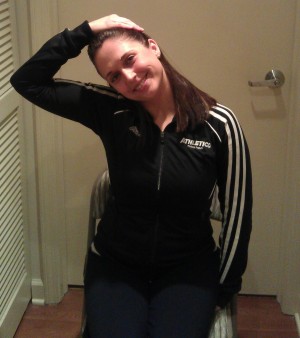
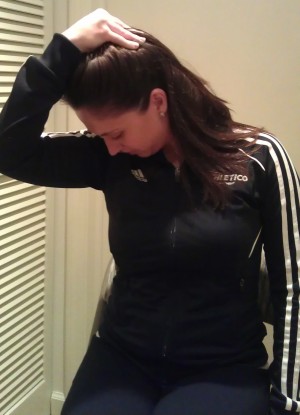
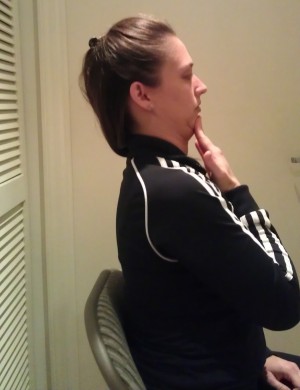
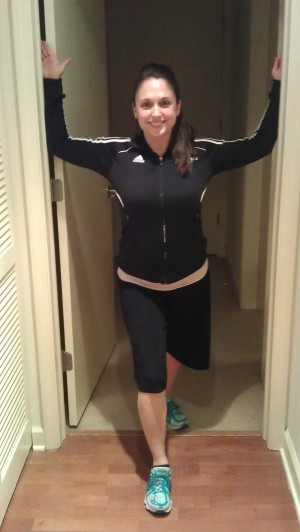
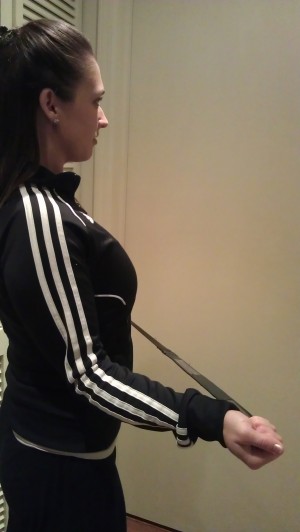

5 Comments
Johnson @ Orthopedic Surgery India
These are great exercise tips Sarah. Accumulated tension in the neck and shoulder muscles is extremely common, a good exercise can relieve the aching and stiffness that we feel sometimes. I can also used this techniques while sitting in a long hours at work, we know that sitting around has never been healthy. Traffic can also trigger my emotional stress most of the time causing some muscle tension on my shoulders. One way to manage it also is through relaxation techniques, by performing abdominal breathing.
Sarah Clough
Hi Johnson@Orthopedic Surgery India! (Very cool if you are posting from India!)
Thanks for reading my post! I appreciate your thoughts and great point about abdominal breathing!
Heather
Thanks so much for this! It’s exactly what I needed today after driving in Chitown’s copious snow!
Lynn Dennis
these are great, thanks
Jillian@www.hipconditions.net
This stretching routine is done before heading out for a drive. When I am stuck in traffic I put the music on an extra volume and just start dancing to it just to let time pass me by. In that way, I feel less agitated and it’s the most fun thing to do while waiting aside from eating. A snack in the car isn’t so bad too while grooving to your kind of music too. Also soreness felt after several hours from exercising is a good sign. It means your muscle is undergoing changes of progress.